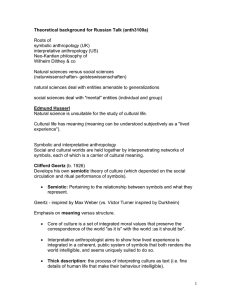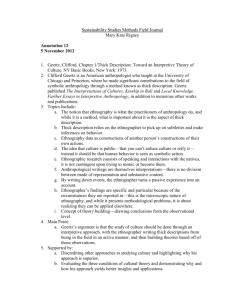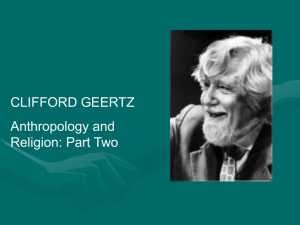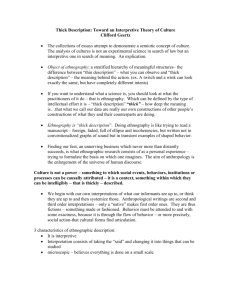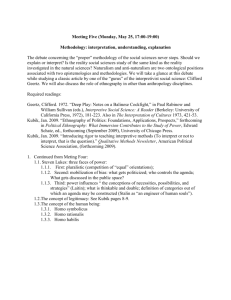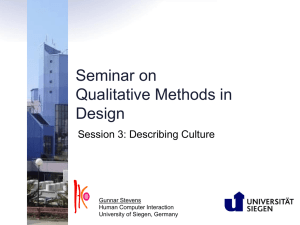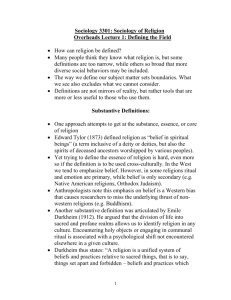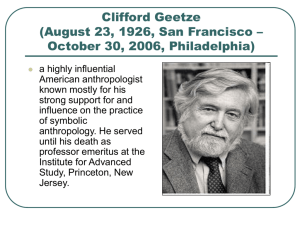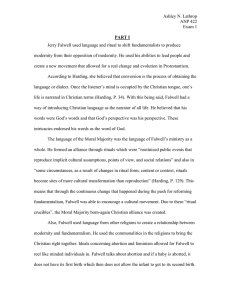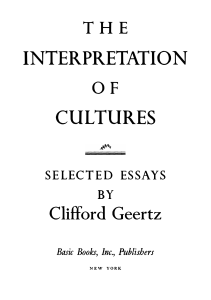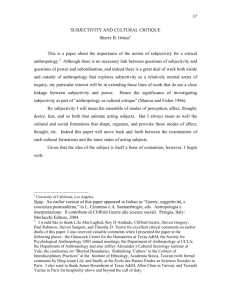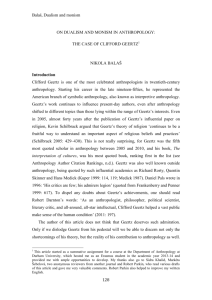I3.Interpre
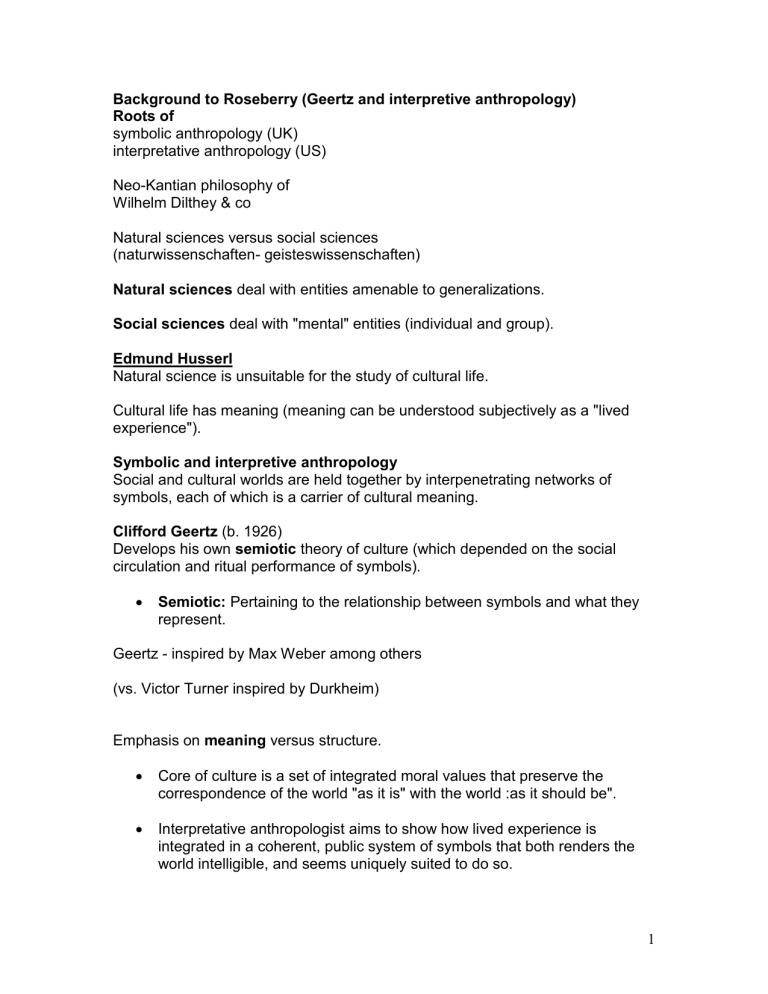
Background to Roseberry (Geertz and interpretive anthropology)
Roots of symbolic anthropology (UK) interpretative anthropology (US)
Neo-Kantian philosophy of
Wilhelm Dilthey & co
Natural sciences versus social sciences
(naturwissenschaften- geisteswissenschaften)
Natural sciences deal with entities amenable to generalizations.
Social sciences deal with "mental" entities (individual and group).
Edmund Husserl
Natural science is unsuitable for the study of cultural life.
Cultural life has meaning (meaning can be understood subjectively as a "lived experience").
Symbolic and interpretive anthropology
Social and cultural worlds are held together by interpenetrating networks of symbols, each of which is a carrier of cultural meaning.
Clifford Geertz (b. 1926)
Develops his own semiotic theory of culture (which depended on the social circulation and ritual performance of symbols).
Semiotic: Pertaining to the relationship between symbols and what they represent.
Geertz - inspired by Max Weber among others
(vs. Victor Turner inspired by Durkheim)
Emphasis on meaning versus structure.
Core of culture is a set of integrated moral values that preserve the correspondence of the world "as it is" with the world :as it should be".
Interpretative anthropologist aims to show how lived experience is integrated in a coherent, public system of symbols that both renders the world intelligible, and seems uniquely suited to do so.
1
Thick description: the process of interpreting culture as text (i.e. fine details of human life that make their behaviour intelligible).
Hermeneutic circle: The interpretive strategy of going from the particular to the general and back to the particular, e.g. from the details of a poem to the meaning of the whole poem and back again. Used by Geertz and others to make sense of people's actions, which are thus treated like a text.
Verstehen: German word literally meaning "to understand" or
"understanding." It is used in the social sciences in opposition to
"explanation."
Approach that examines events from the point of view of what they mean for the actors involved and not on the basis of
some causal principle or "law" that is external to their experience. It doesn't try to make predictions partly because it takes the unpredictability of human existence as part of the meaning of life.
According to Geertz the anthropological analysis of culture is not "an experimental science in search of law but an interpretive one in search of meaning (1973: 5).
Thick description
Interpretive anthropology
Move from social structure to meaning
Human beings live suspended in webs of significance which themselves have spun and continue to spin:
they make sense, attribute meanings, of and for themselves.
What distinguishes anthropology:
not the techniques
the way it is operationalized
2
anthropologists do ethnography ethnography: particular way of inscribing culture as a "thick description" example: twitching and winking difference in terms of over, and observable behaviours, observation and superficial (thin) description: winking: symbol of conspiracy to an ally twitching: involuntary movement social significance (layers: mimicking a twitch, parodying a wink, rehearsing ….)
To describe this stratification of layers of significance is to describe "thick".
Main objective of ethnography: to get beneath the surface of behaviour to the layers of inference and implication and the hierarchy of structures of meaning.
Way to do this: microscopic and particular focus.
Wider conclusions are drawn from densely textured facts and broad abstractions grounded in narrow particulars.
This is the path to underlying conceptual structures which give meaning to the symbolic usage within a culture.
Culture is the sum, accumulated totality of symbol systems (religion, ideology, economics etc.) in terms of which people make sense of themselves and their world and represent themselves to themselves and to others.
Members of a culture use its symbols (winks, foods, words, games) as a language through which to read and interpret, to express and share meaning.
Major end and primary condition of human existence: imposition of meaning on life.
Traffic in significant symbols is constant, public but not transparent.
3
Symbols are ambiguous, and the meaning need to be interpreted before it can be read of.
Reading are not fixed or made explicit.
Anthropologist: inscribes culture ergo interpret the interpretations of that culture.
4
